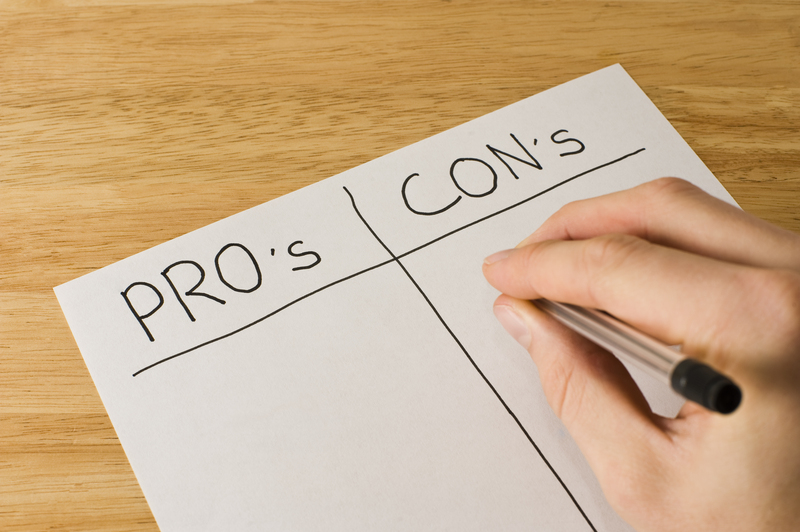Navigating complex piano moves: Trust in skilled movers
Posted on 23/05/2025
Navigating Complex Piano Moves: Trust in Skilled Movers
Pianos are extraordinary musical instruments -- symbols of elegance and artistry in homes, concert halls, and studios around the world. Yet, the very attributes that make them magnificent--their weight, delicacy, and intricate mechanisms--also make moving them a daunting task. Whether you own a grand, baby grand, or upright piano, navigating the complexities of a piano move requires not only care, but also professional expertise. This article delves into why you should rely on skilled piano movers for such a specialized job, explores the challenges involved, and offers guidance for a successful and stress-free piano relocation.

Understanding the Challenges of Piano Moving
It's a common misconception that moving a piano is just about lifting a heavy object. In reality, pianos are among the most difficult items to relocate. Let's explore why:
- Sheer Weight and Size: Pianos can weigh between 300 and 1,400 pounds, with grand pianos being the most challenging. Their size and weight distribution create unique lifting and maneuvering obstacles, especially through narrow hallways or staircases.
- Fragility and Sensitivity: Despite their bulk, pianos are extremely delicate. Their internal mechanisms include thousands of moving parts, which can be disrupted by improper handling or sudden jarring.
- Value and Sentiment: Many pianos are priceless family heirlooms or costly investments. Damage during a move can mean expensive repairs or a loss of sentimental value.
- Special Equipment Requirements: Moving a piano isn't a matter of brute force. It frequently requires custom dollies, heavy-duty straps, padding, and ramps--all of which trained movers possess.
Types of Pianos and Their Moving Complexities
Before navigating a complex piano move, it's essential to understand the type of piano involved, as each comes with its own moving intricacies:
- Upright Pianos: Compact but heavy, these are somewhat simpler to maneuver but can be awkward to fit through tight spaces.
- Baby Grand and Grand Pianos: Their elongated shapes require disassembly of legs, pedals, and music stands, as well as careful tilting and crating.
- Digital Pianos: While lighter, these still demand careful handling due to their delicate electronics.
Why Trusting Skilled Piano Movers Matters
When it comes to transporting a piano safely, professional piano movers have a distinct edge over general movers or DIY methods, for several reasons:
Expertise in Handling Delicate Instruments
Skilled piano movers undergo specialized training. They understand the internal mechanics of various piano types and know how to protect every part, from legs and pedals to the sensitive soundboard.
- Pre-move Assessment: Professionals assess your specific piano and moving environment, planning the safest route and method.
- Use of Correct Tools: A professional will never use makeshift equipment. Instead, they'll employ piano skids, heavy-duty straps, ramps, and custom-crating solutions.
Reducing Risk of Injury and Damage
Moving a piano without proper know-how exposes both the instrument and the people involved to significant risk:
- Instrument Safety: Skilled movers secure all moving parts, prevent scratches and bruises, and keep the piano balanced throughout the process.
- Personal Safety: The weight and awkward shape of a piano can cause serious injury if mishandled. Professional movers are trained to use lifting techniques that protect everyone involved.
Insurance and Peace of Mind
An overlooked benefit of entrusting your piano move to specialized movers is their comprehensive insurance coverage. Should accidental damage occur, you are financially protected, which isn't typically the case with standard DIY moves.
The Step-by-Step Process of a Complex Piano Move
To demonstrate the value skilled movers bring, let's break down a typical piano relocation:
1. Pre-Move Preparation and Assessment
Trusted piano movers begin with a detailed evaluation, considering:
- Type and dimensions of the piano
- Exit route challenges (stairs, doorways, landings, tight corners)
- Destination location logistics
- Weather and environmental conditions (important for humidity-sensitive instruments)
2. Disassembly (if necessary)
For grands and baby grands, movers gently remove the legs, pedals, and lyre. All components are individually wrapped and padded for maximum protection.
3. Wrapping and Securing
Heavy-duty padding, shrink wraps, and corner protectors are used to shield the piano's finish and structural components. Even upright pianos are carefully cocooned to prevent abrasion and moisture damage.
4. Lifting and Transporting
Skilled movers use piano dollies, skid boards, and ramps to maneuver the instrument. Teamwork and communication ensure the piano remains stable at all times, even during stair carries or tight turns. In multi-story relocations, custom cranes or lifts may be deployed.
5. Loading and Transit
Within the moving truck, movers secure the instrument against shifting and impact. Climate-controlled vehicles may be used for long-distance transports to protect against temperature and humidity swings.
6. Unloading and Installation
At the destination, the process is reversed--unloading, re-assembly, and positioning the piano with precision care. Movers can also offer tips on acclimating the instrument and recommend tuning services post-move.
The Risks of DIY Piano Moves
While it may be tempting to enlist friends or family and attempt a piano move yourself, this decision can carry significant risks:
- Instrument Damage: Scratches, dents, broken legs, or damaged action mechanisms are all too common when inexperienced individuals attempt a move.
- Personal Injury: Back injuries, foot injuries, or crushed fingers can occur in an instant.
- Property Damage: Walls, floors, railings, and door frames can suffer alongside the piano itself.
- Lack of Insurance: DIY moves are rarely insured, making any mishap a personal liability.
How to Choose the Right Piano Movers
If you're serious about navigating a complex piano move safely, here's how to ensure you're hiring the right professionals:
- Specialization: Look for movers who specialize in piano relocations, with a proven track record and dedicated equipment.
- References and Reviews: Check for strong testimonials, high ratings, and word-of-mouth recommendations.
- Licensing and Insurance: Verify credentials and ensure they offer adequate insurance.
- Transparent Quotes: Reputable movers offer upfront, detailed estimates tailored to your move's complexity.
Questions to Ask Prospective Piano Movers
- How many pianos do you move annually, and what types?
- What specific training do your staff members receive?
- Do you provide climate-controlled transportation options?
- What happens in case of accidental damage?
- Can you handle moves up or down stairs?
Additional Tips for a Successful Piano Move
- Plan in Advance: Schedule your piano move ahead of time, especially during peak moving seasons.
- Clear Obstacles: Remove rugs, furniture, and decor along the projected path to facilitate a smoother move.
- Inform Your Movers: Communicate all access details, such as tight spaces or parking restrictions.
- Piano Tuning: Expect to have your instrument professionally tuned a few weeks after the move, allowing it to acclimate.
- Update Insurance: Double-check your homeowner's or musical instrument insurance policies for additional coverage.

Conclusion: Trust Skilled Movers for Complex Piano Moves
Entrusting your piano to anyone less than a specialist is a risk not worth taking. With professional piano movers, you're investing in more than manpower -- you're gaining peace of mind, expert handling, and the assurance that your cherished instrument will arrive safely and soundly at its new home. Whether you're moving a beloved upright across town or a concert grand across the country, navigating complex piano moves is best left to those with proven skill, experience, and dedication to the craft. Trust in skilled movers means your piano can continue to make music for generations to come.
FAQs About Complex Piano Moves
How much does it cost to move a piano?
Piano moving costs vary based on instrument size, distance, complexity of the move (stairs, tight turns, etc.), and required services. Expect a general range from $150 to $2,000+. Always request a detailed estimate.
Is it necessary to hire professional piano movers?
Given the risks, complexities, and value involved, hiring skilled movers is almost always the right choice for any piano move, especially for grands or moves involving stairs.
How long does piano moving take?
Standard moves may take a few hours, but complex moves could require more time for disassembly, maneuvering, and reassembly.
Will my piano need tuning after the move?
Yes. Moving can affect a piano's tuning. Allow it to acclimate to its new environment for several weeks before scheduling a professional tuning.

_result.jpg)





